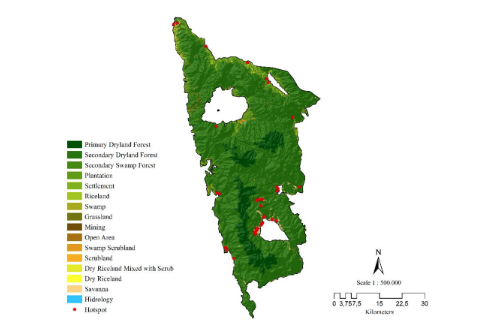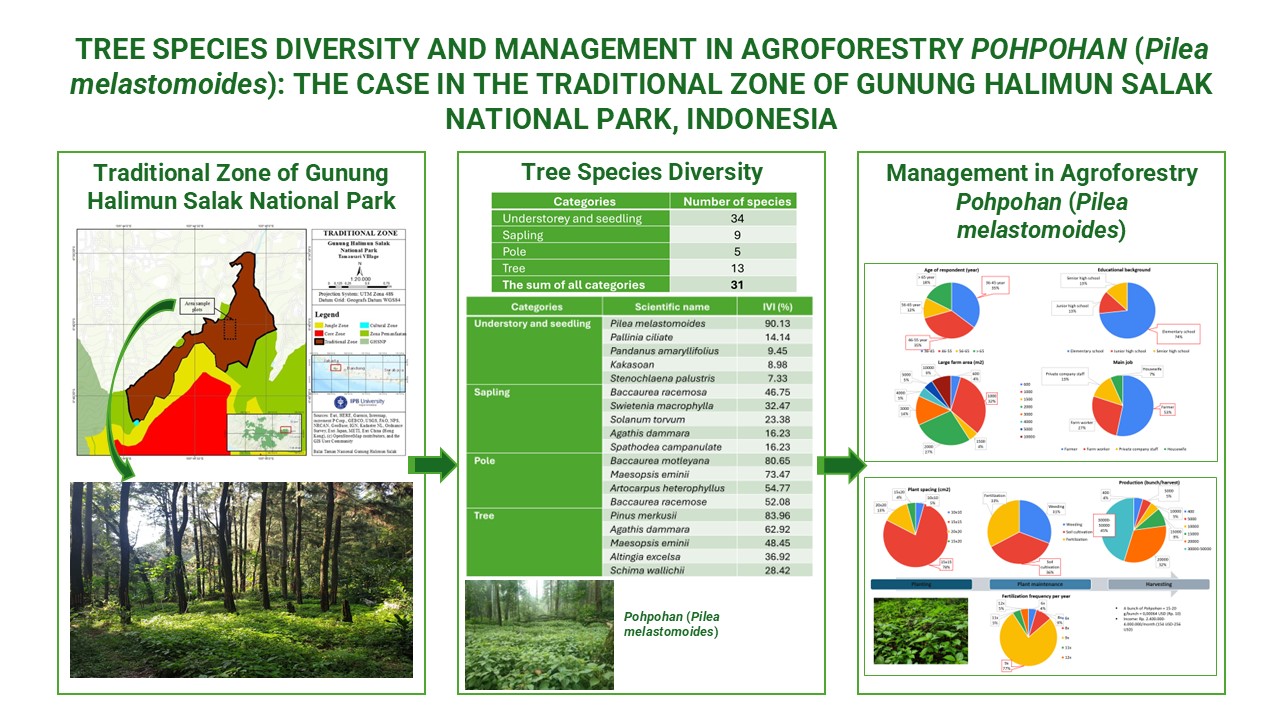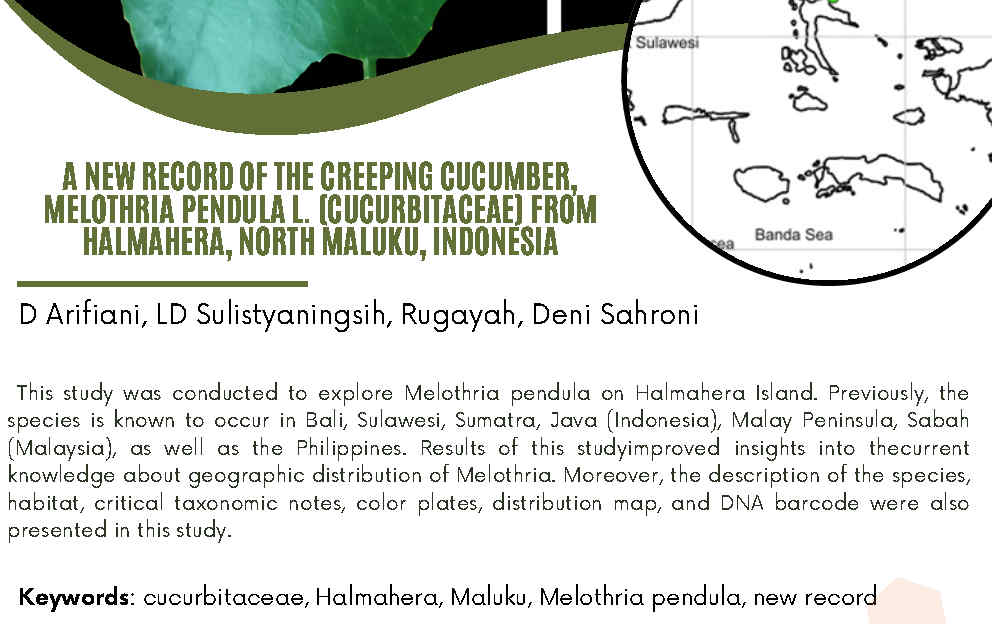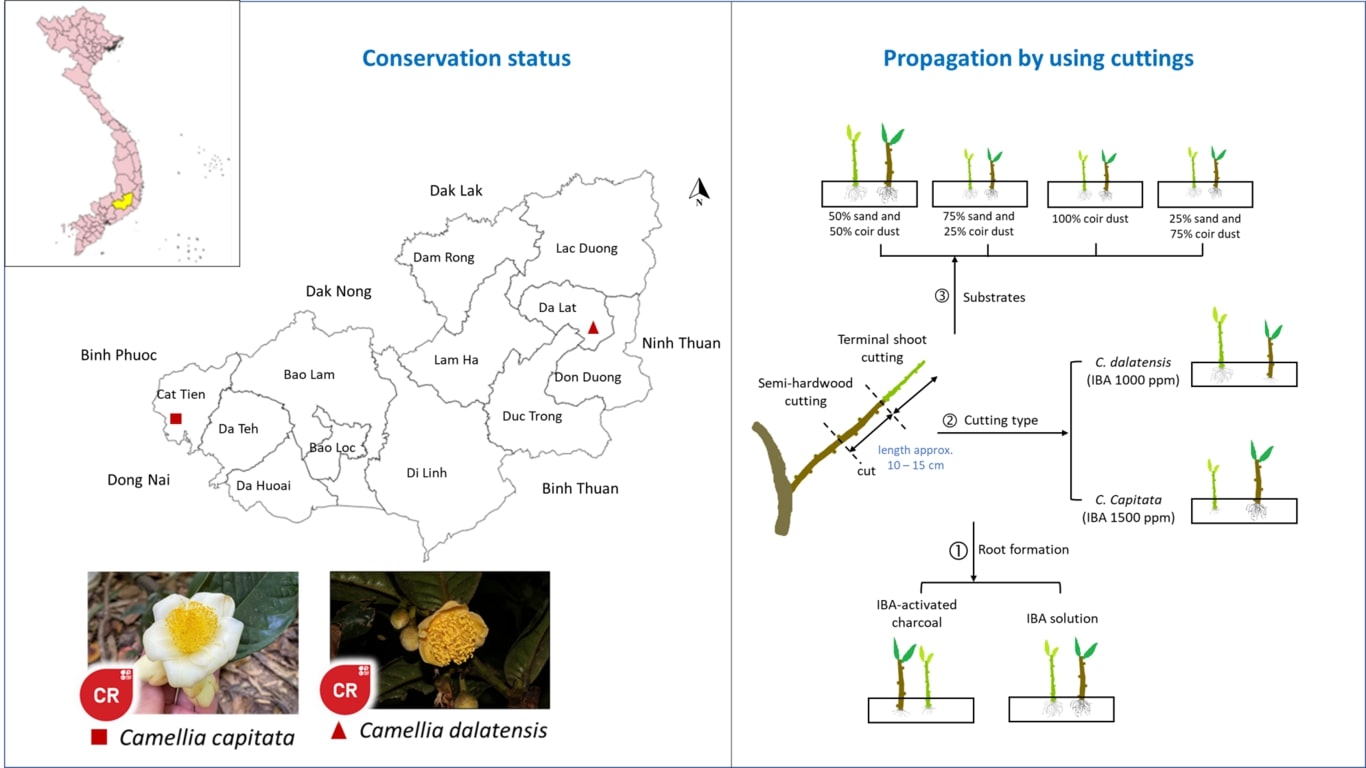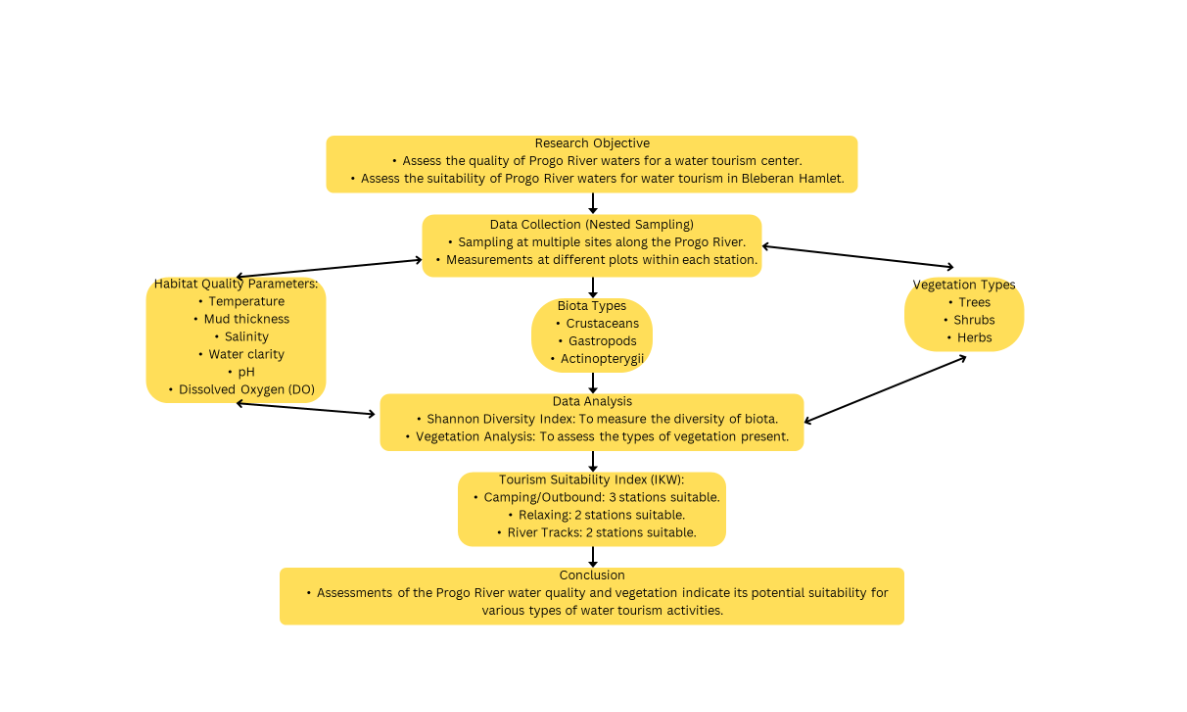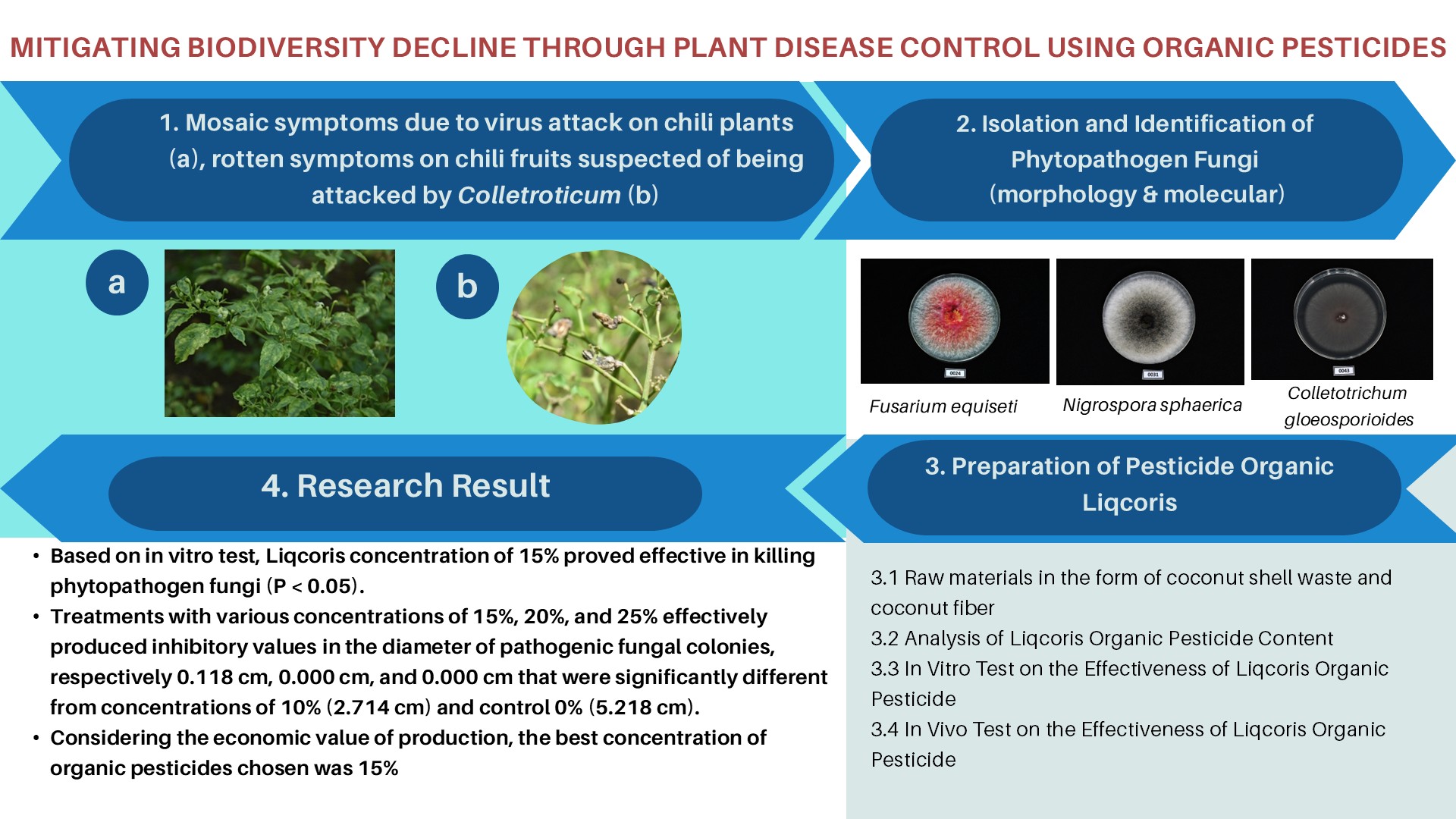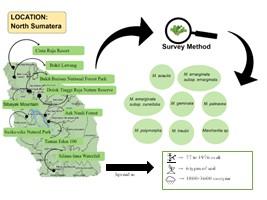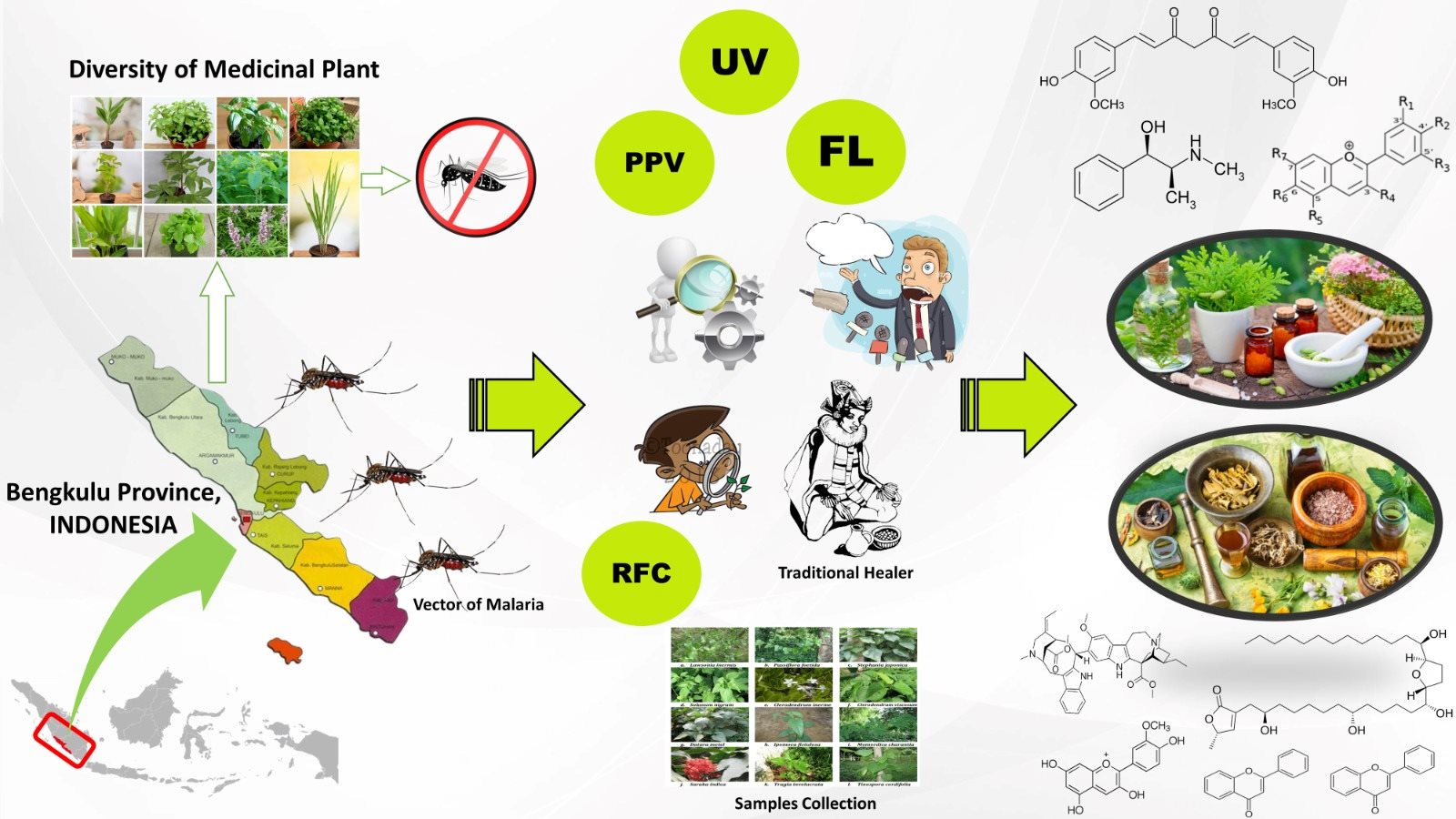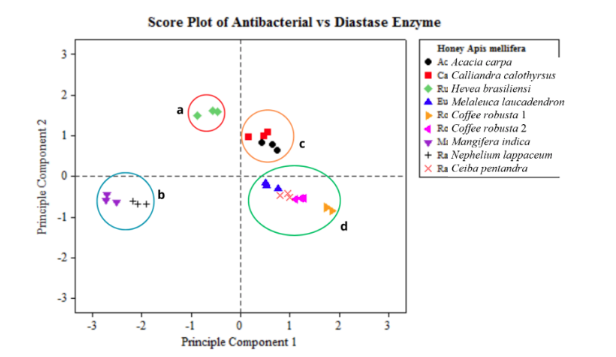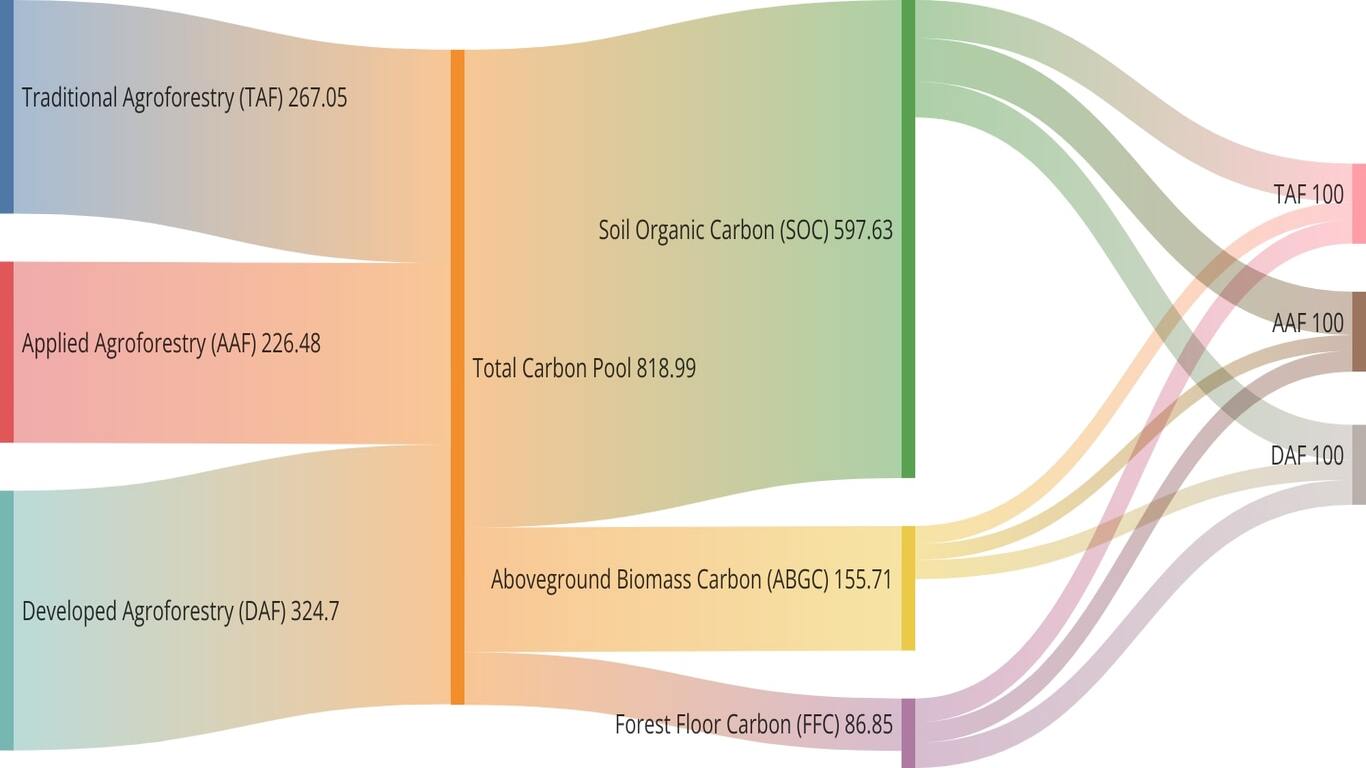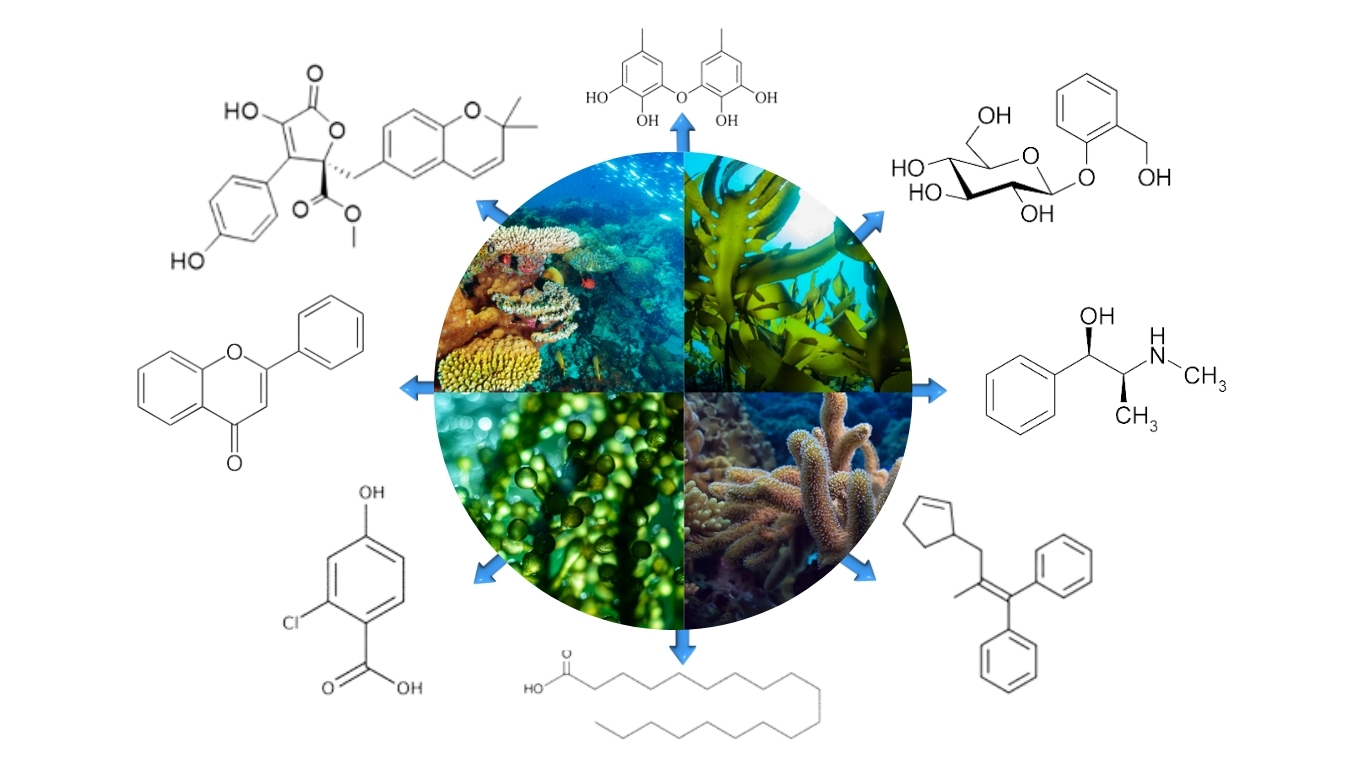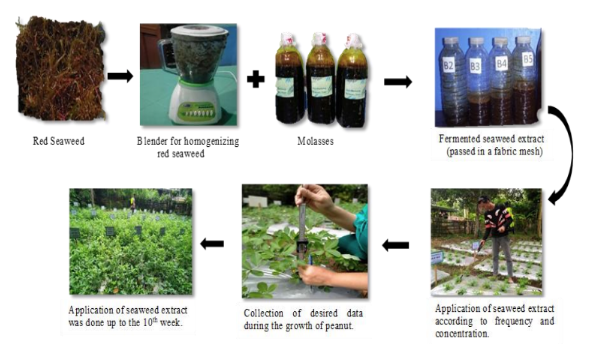CHROMOSOMAL CHARACTERS OF THE INDONESIAN SAND GOBY, OXYELEOTRISMARMORATA BLKR. 1874 (ELEOTRIDAE)*)
Downloads
Karyomorphological investigation of sand goby or marble sleeper (Oxyeleotris marmorata Blkr.) from Cirata Reservoir, West Java, Indonesia was undertaken to determine the modal chromosome number and fundamental number, and to construct the karyotype from somatic metaphase cells of head kidney. A total of 30 fish samples from Cirata Reservoir was sacrificed for direct chromosome preparation by colchicine-citrate-aceto-methanol-Giemsa staining-air drying technique. Chromosome set analysis showed that the modal chromosome number of the test fish is 2n = 46, confirming previous studies. Fundamental number is 50. Two karyotypic formulas were found, i.e. 1) 2n = 46 (4SM + 42A); and 2) 2n = 46 (2M + 2SM + 42A). Key Words: Freshwater fishes, Chromosome analysis, Oxyeleotris marmorata, Indonesia
Downloads
Copyright (c) 2017 BIOTROPIA - The Southeast Asian Journal of Tropical Biology

This work is licensed under a Creative Commons Attribution-NonCommercial-NoDerivatives 4.0 International License.
Authors who publish with this journal agree with the following terms:
- Authors retain copyright and grant the journal right of first publication, with the work 1 year after publication simultaneously licensed under a Creative Commons attribution-noncommerical-noderivates 4.0 International License that allows others to share, copy and redistribute the work in any medium or format, but only where the use is for non-commercial purposes and an acknowledgement of the work's authorship and initial publication in this journal is mentioned.
- Authors are able to enter into separate, additional contractual arrangements for the non-exclusive distribution of the journal's published version of the work (e.g., post it to an institutional repository or publish it in a book), with an acknowledgement of its initial publication in this journal.
- Authors are permitted and encouraged to post their work online (e.g., in institutional repositories or on their website) prior to and during the submission process, as it can lead to productive exchanges, as well as earlier and greater citation of published work (See The Effect of Open Access).









